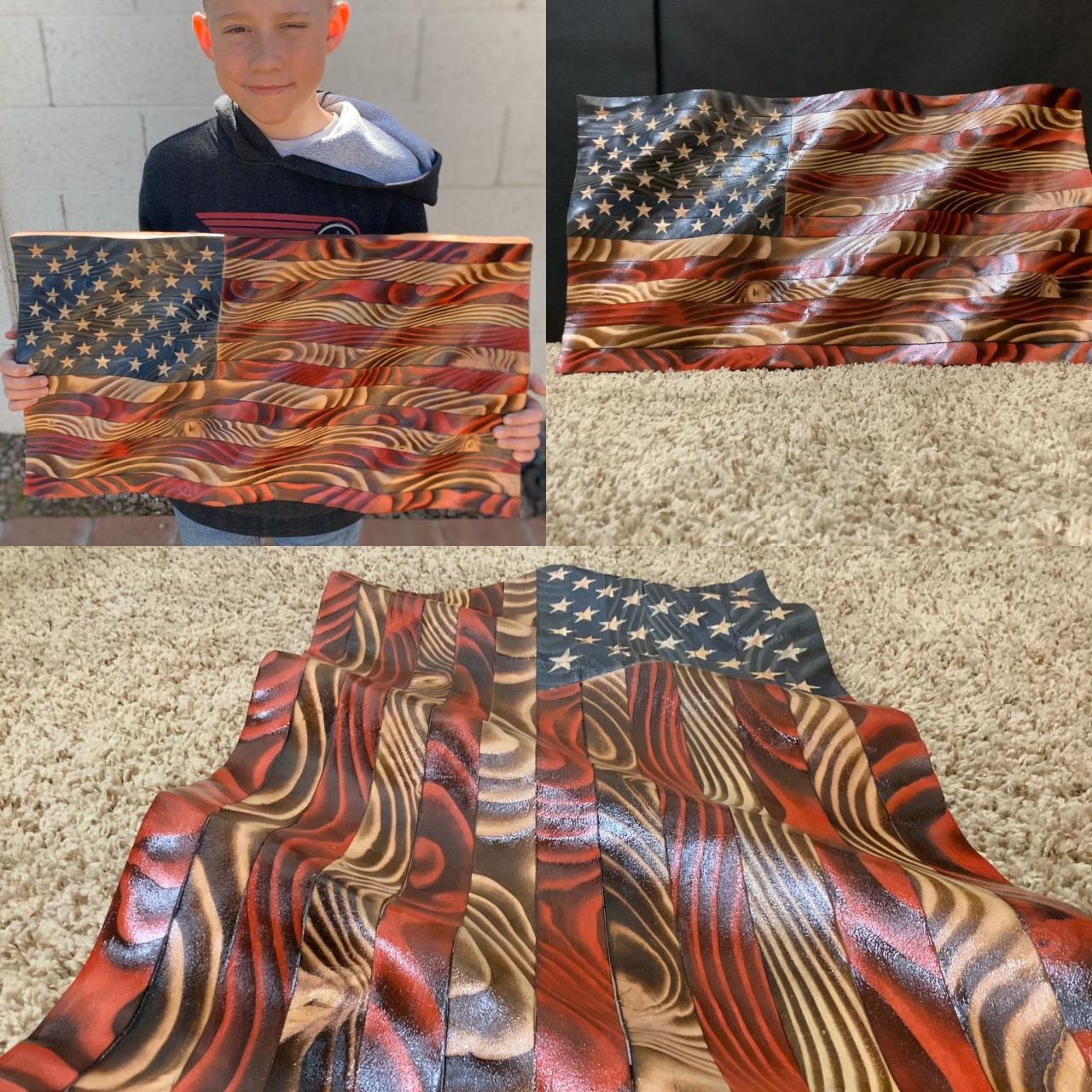Crafting a Wooden American Flag: A Comprehensive Guide
The American flag, a cherished symbol of freedom, unity, and patriotism, can be a beautiful addition to any home or office. While many opt for traditional fabric flags, a wooden flag offers a unique and durable alternative. If you’re looking to create your own wooden American flag, this detailed guide will provide you with all the necessary instructions and tips.
Materials You’ll Need:
- Wood boards (pine, oak, maple, or other suitable hardwood)
- Wood glue
- Clamps
- Sander and sandpaper
- Measuring tape and pencil
- Jigsaw or band saw
- Router (optional)
- Wood stain or paint
- Protective finish (polyurethane, varnish, etc.)
- Safety glasses and dust mask
Step-by-Step Instructions:
1. Gather and Prepare Your Materials:
- Start by selecting appropriate wood boards. Pine is a budget-friendly option, while hardwoods like oak or maple offer greater durability.
- Cut the boards to the desired dimensions, ensuring they are equal in width and length. Sand the edges smooth to remove any splinters or rough spots.
2. Create the Stripes:
- Decide on the number of stripes you want your flag to have. The standard American flag has 13 red and white stripes, but you can choose any number or color combination.
- Measure and mark the width of each stripe on the boards. Cut the stripes using a jigsaw or band saw, keeping the cuts straight and precise.
3. Assemble the Stripes:
- Arrange the stripes in alternating red and white order. Apply a thin layer of wood glue to one edge of a stripe and carefully align it with the adjacent stripe.
- Clamp the stripes together until the glue dries. Repeat this process for all stripes until the entire flag is assembled.
4. Create the Stars (Optional):
- If desired, you can add stars to your flag. Draw the desired number and shape of stars onto a separate piece of wood.
- Cut out the stars using a jigsaw or router. Sand the edges smooth and paint or stain them blue.
5. Attach the Stars (Optional):
- Glue the stars to the blue canton (upper-left corner) of the flag, ensuring they are evenly spaced and aligned correctly. Clamp the stars in place until the glue dries.
6. Sand and Finish:
- Once the flag is assembled, sand the entire surface smooth to remove any imperfections or excess glue.
- Apply a wood stain or paint in the desired color scheme. Allow the finish to dry completely.
- Apply a protective finish, such as polyurethane or varnish, to protect the flag from moisture and UV damage. This will also enhance the appearance and durability of the flag.
Tips for Success:
- Use high-quality wood and ensure it is free of defects or knots.
- Cut the stripes and stars precisely to ensure a clean and uniform look.
- Apply the glue evenly and sparingly to avoid excess squeeze-out.
- Allow ample time for the glue and finish to dry thoroughly.
- If desired, you can add decorative elements, such as rope, metal accents, or a custom frame, to enhance the flag’s appearance.
FAQ:
1. What type of wood is best for a wooden flag?
Pine is a budget-friendly option, while hardwoods like oak or maple offer greater durability and a more premium look.
2. How thick should the wood be?
Typically, boards between 1/2 inch and 3/4 inch thick are suitable. Thinner boards may be more prone to warping, while thicker boards may be more difficult to cut and shape.
3. How do I ensure the stripes and stars are straight and even?
Use a measuring tape and pencil to mark the cuts accurately. A straight edge or guide can help keep the cuts straight when using a saw. For the stars, consider using a template or router to ensure uniform shape and alignment.
4. Can I make a flag in any size?
Yes, you can customize the size of your flag to fit your needs. Just adjust the measurements and number of stripes accordingly.
5. How do I hang a wooden flag?
You can use nails, screws, or mounting hardware to hang your flag on a wall or other surfaces. Consider adding D-rings or wire hangers to the back of the flag for easy installation.
References:
- DIY Network: How to Build a Wooden American Flag https://www.diynetwork.com/how-to/make-and-decorate/crafts/how-to-build-a-wooden-american-flag-pictures
- Instructables: How to Make a Wooden American Flag https://www.instructables.com/Wooden-American-Flag/
- The Wood Whisperer: How to Make a Wooden American Flag https://www.thewoodwhisperer.com/videos/make-wooden-american-flag/
